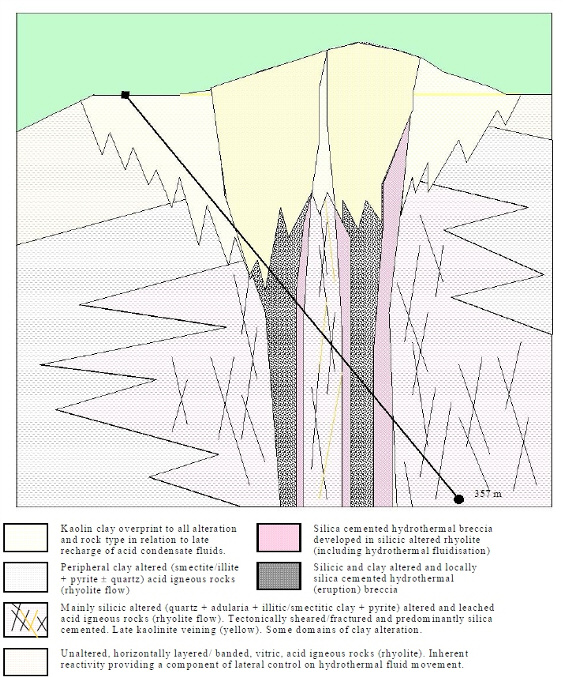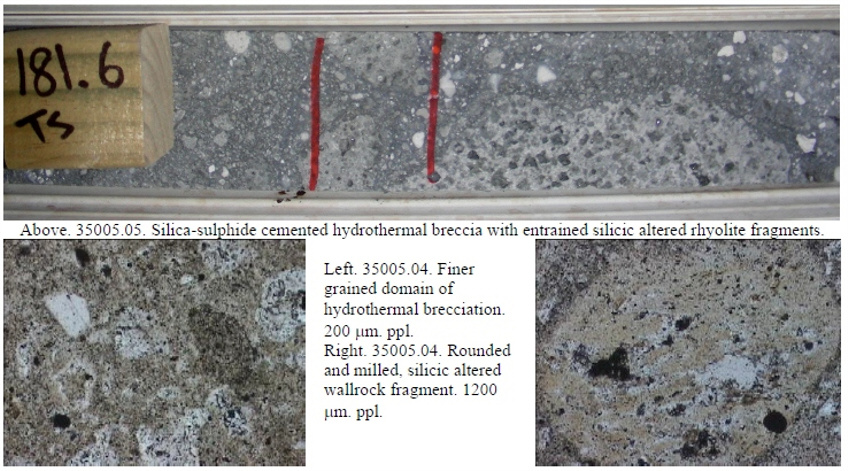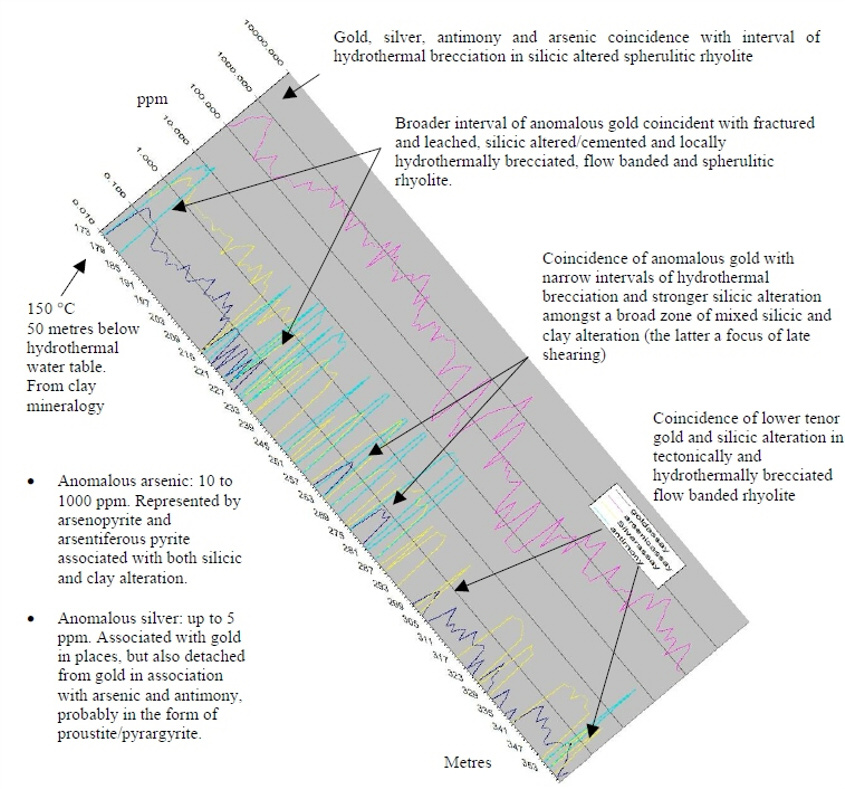
Petrological studies of diamond core from TNTDDH01 of the Tahunaatara gold prospect, including petrographic/ mineragraphic descriptions and XRD analyses, define and confirm anomalous quartz, silver, antimony and arsenic to be associated with low-sulphidation, epithermal-style hydrothermal alteration developed within rhyolite and locally developed hydrothermal eruption breccia.
Hydrothermally altered, poorly sorted to fluidised flow-banded
hydrothermal eruption breccias are defined by framework clasts of variably altered
rhyolite and early hydrothermal vein or breccia cement contained within silt to
less-than silt-sized matrices comprising comminuted framework clasts. A feature
of the hydrothermal eruption breccias is the entrainment of older hydrothermal
rock types as evidence for mineralisation associated with earlier stages of
hydrothermal fluid flow at depth.
Whereas arsenic is broadly anomalous throughout the hole, gold is more confined to domains of silica cemented hydrothermal brecciation and silicic alteration centred upon networks of silica + pyrite-filled fractures and microfractures within the flow banded rhyolite. Silver, similar to arsenic is more broadly anomalous in places anomalous together with arsenic and antimony consistent with the presence of proustite/pyrargyrite.

